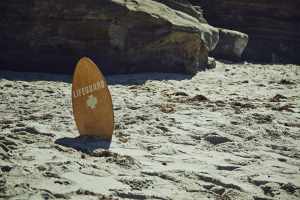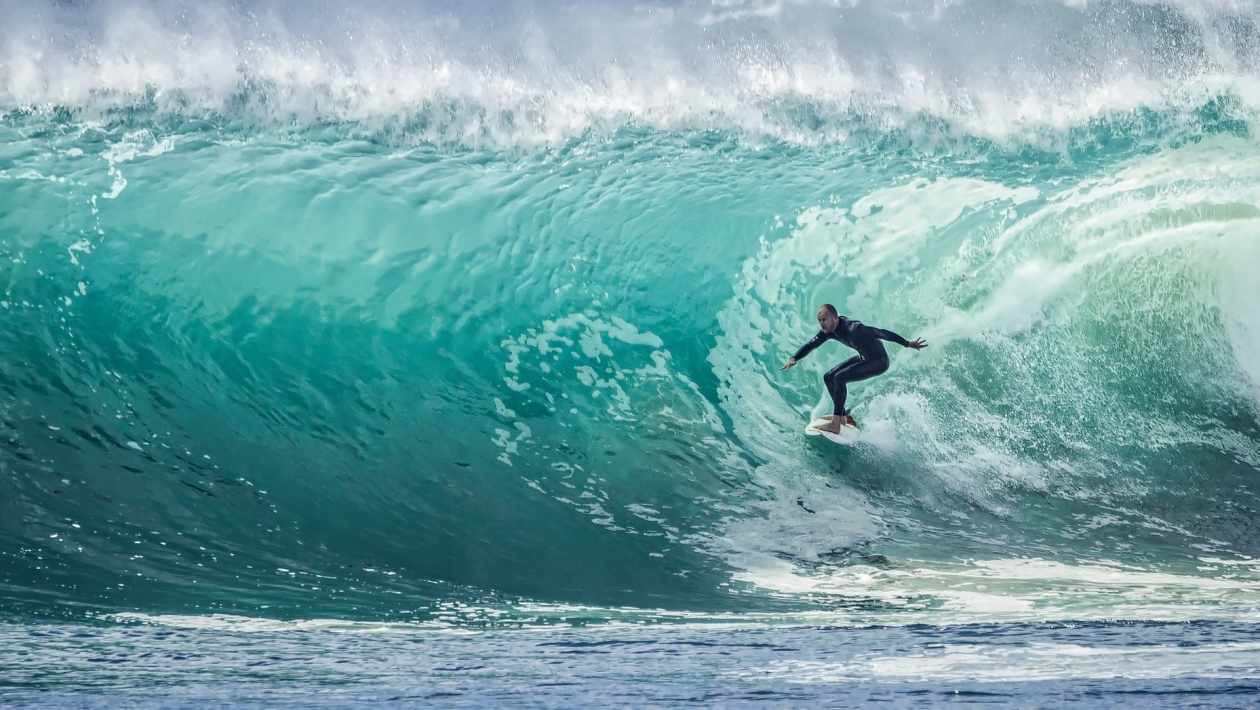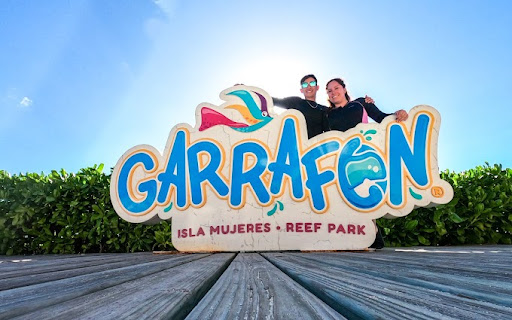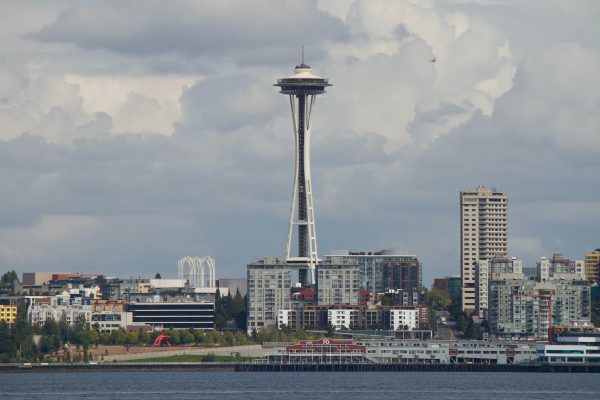You’ve probably come here because you have discovered how many distinct types of surfboards there are. While people surfed atop long, flat slabs of wood, things were a lot easier, but today’s beaches have a vast range of surfboard material, forms, and lengths.
When you have never surfed before, check out our suggestions. In addition, we’ve put up an analysis of the most popular types of surfboards, whether you want to add new surfboards to the lineup or wish to learn as much about the many varieties of surfboards.
Table of Contents
Types of surfboards as per materials and construction
These types of surfboards are made from a variety of different materials. Soft-top foam, polyurethane, wood, and epoxy are very popular ones.
Wooden surfboards
Every one of the items on this list is advanced in surfing technology from the mid-twentieth century. But people have been surfing on wooden surfboards for hundreds of years.
There are many things you must know if you’re seeking the most ecologically friendly surfboard. Hardwood surfboards have the least environmental effect, and then you become friendly to the environment! This is because wooden boards do not require many synthetic materials; they produce less waste than other materials.
Pros
- Environmentally preferable
- Extremely long-lasting, depending on maintenance
- The added weight helps them maintain speed and navigate rough waters
Cons
- Surfboards made of wood are generally heavier and more difficult to maneuver
- Generally more costly
Wooden surfboards are a little more difficult to handle, so they’re heavier. A fiberglass board is ideal for intermediate to expert surfers who wish to do acrobatic tricks on the waves. Wood is also pricier, so consider a wooden board a commitment in the sport rather than a piece of entry-level gear.

Surfboards made of polyurethane (poly)
Surfers began experimenting with different materials for creating boards, and polyurethane (PU) foam rapidly dominated the industry. Poly boards are constructed in the PU core that is covered in fiberglass and coated with epoxy resin.
Because PU foam and polyresin are affordable and simple to work with, they’re the most popular materials for hand-shaped boards. Although not all surfboard specters are created equal, a hand-shaped surfboard is a significant upgrade over a mass-produced surfboard if you can locate one.
These polyurethane types of surfboards foam and resin have some elasticity, which provides you better control or power on a wave. However, the flexibility comes at a price: they’re more vulnerable to damage, so if you are not cautious, your board will be riddled with dents, causing the fiberglass coating to delamination and detach from the foam. Poly boards, fortunately, are relatively simple to fix.
Pros
- Inexpensive
- Repairing is simple
- It is an even more flexible material than epoxy
- It’s usually a little thicker than epoxy, which helps in tough situations
Cons
- Damage is easier to cause
- For beginners, the added weight might be more difficult
As the PU foam is thick, it offers poly surfboard the heft to cut over choppy waves, resulting in a more comfortable ride. In addition, many surfers appreciate the stability and control, which a poly surfboard gives while riding huge, strong waves.
Epoxy surfboards
Although epoxy surfboards have been around since the 1950s, they were never very famous until the mid-2000s. In 2005, the country’s leading provider of PU boards unexpectedly shuttered its doors. Board producers began to convert to epoxy as a result of the vacuum they generated.
Epoxy boards have a foam base made of polystyrene (PS) or extended polystyrene (EPS) covered with fiberglass and epoxy resin. These boards are generally lighter than PU surfboards because these pads are less thick.
Epoxy boards are popular among novices because it’s simpler to catch waves with such a lighter board. Proficient surfers enjoy that these surfboards can ride tiny waves, which a poly surfboard would find hard to ride.
The epoxy board’s components are extremely rigid and long-lasting. While they don’t provide as much input as the poly boards, they are far more durable and cheaper to maintain in the very long run.
Pros
- Very long-lasting
- Smaller waves are easier to catch with less weight
- These materials are less harmful to the environment
Cons
- It can be more expensive, especially if it’s a hand-shaped surfboard
- On the rough sea, it’s often less stable
- When compared to poly boards, stiff materials provide less input
When these types of surfboards are mass-manufactured from molds, they can be affordable. But if you want a hand-shaped surfboard, you can expect to pay approximately 20% more. Although epoxy surfboards are more costly, more difficult to shape and take longer to grow than poly surfboards, many shapers choose epoxy for reduced environmental cost.

Surfboards with a soft top
Soft-top technologies have progressed to the point where the best foams can easily outperform many epoxies or poly boards.
Pros
- Because of the inexpensive cost, everyone can surf with it
- Polyurethane boards are stable and buoyant, making them ideal for beginners
- They typically require less upkeep but don’t require waxing
- This is a little less unpleasant to wipe out on a foam board
Cons
- Whatever you pay for is what you get
- A low-cost soft-top will deteriorate in a few years, and it will never function as well as a more costly board.
- Whether you’re prepared to spend a little extra, you can get some fantastic, high-quality soft shirt.
Which type of surfboard should You buy: poly or epoxy?
It largely boils down to personal taste if you’re feeling comfortable on the soft-top and want to upgrade to a more sophisticated type of surfboard.
Go for epoxy boards if you want something that is extremely robust, buoyant, and ecologically friendly. Go for poly if you want a board that provides you greater control, is expensive to fix, and is less costly.
The most crucial factor, though, is what it feels like riding a wave. Some individuals prefer the “traditional” feeling of a poly board, while others prefer the feel of epoxy. If you have the opportunity, borrow or lease a few various types of boards to discover which one works great for you.
Shapes of surfboards
There are five primary types of surfboards, fish boards, longboards, Shortboards, funboards, and guns:
1. PShortboard 5′-7′
A shortboard is required if you’d like to perform some pretty spectacular acrobatic tricks on the head of a wave. The sharp noses and narrow rails on these limited boards offer you the finest turning abilities. A shortboard gives you greater control than just about any other surfboard type when it comes to maneuvering around the wave.
This shortboard has one major disadvantage: learning to surf is difficult, and it is often only advised for intermediate & experienced surfers. Because the shortboard’s limited volume, narrow rails, and pointed tip make it difficult to paddle and balance, novice surfers should master the basics on a hoverboard before converting to a shortboard.
2. Fish Board 5′-6’6″
Shortboards are fantastic for riding quick, strong waves, but they struggle when not quite as good. The fish board will help you grab a lot more waves whenever the surf is sluggish and tiny.
Fish surfboards receive their moniker from the notched tail that looks like a fish. They’re typically the same height as the shortboard, but they’re broader and thicker for more volume.
You do not even need to be as experienced to ride a fish board because it’s more stable and simpler to paddles than a shortboard, but we still suggest it for intermediate or advanced surfers.
Many people think fish boards as good for little, sluggish waves, but they’re just as great fun in bigger ones. A fish is ideal for a more relaxing ride on huge waves that don’t need much cutting.

3. Longboard (at least 9′)
Every surfer should own a longboard. They’re suitable for people of all ages and abilities, and they provide some benefits over smaller boards.
Longboards are the most convenient to paddle, the steadiest, and the most capable of catching waves. You will be able to grab waves earlier and ride them faster than anybody on a surfboard because of the increased volume and surface area. With the longboard, you can surf even whenever the waves barely go over your ankles.
4. Funboard 6.5′-9′
Such surfboards are midway between a shortboard and a longboard in length, combining the finest features of both designs.
Funboards exist in a range of widths, densities, and nose forms, but the majority of them are built for stability and simplicity of usage.
Funboards are the ideal board for beginners who are transitioning from longboarding to short boarding.
Many individuals will switch from the longboard to the shortboard right away, but the learning process may be high and unpleasant due to the drastic difference.
Enjoy riding a funboard for the time if you’re having difficulties converting to a shortboard.
They have enough mobility to make bottom turns while being stable enough not to wipe out all the time you attempt.
5. Gun board (7′-11.5′)
You’re not able for a gun if it is the first to replace the older one. Only experienced and expert surfers should use guns. They’re created specifically for surfing on enormous, strong waves that you’d be foolish to try to the surfer as a beginner, not just they’re more difficult to operate.
Even as a pro, you need to be somewhat insane to ride those types of waves. Longer than longboards, guns have a pointed nose and tail for better maneuverability.
When surfing a huge wave, you want as much pressure as possible since even a minor mistake might result in serious harm. To cut through the water, guns are broad and hefty.
6. The Shortboard
Shortboards are now the most common surfboard shape in the world. If you go to a famous surfing site, you’ll see that 95% of the riders are using boards that are between 5’5″ & 6’5″ in length.
A shortboard is more difficult to sail than a longboard, although it is simpler to duck dive. Shortboards are also simpler to turn and react swiftly in key times and wave portions. The thrusters (tri-fin) system is the most prevalent fin configuration in shortboards.
7. The Longboard
A longboard was the first board of the contemporary age. Longboards, as the name implies, are lengthy surfboards.
Longboards have a curved or flat nose, lots of front width, and broad tails but are generally over 9′ in length. These are highly buoyant and also have a bunch of foam volume.
As a consequence, they’re simple to paddle, and they will swiftly penetrate any wave. Longboards are ideal for surfing tiny waves since they plan well in messy summer conditions.
These are stable and can be surfed on the tip, but turning them is tough and sluggish. They do, however, represent a surfing tradition and a message.
8. The fish
Shortboards are comparable to fish surfboards, except they are broader from tip to tail and shorter. The level well and create a lot of speed on small-to-medium waves due to their width & low rocker. These tiny, quick surfboards have a fish-inspired fin and thus are usually surfed with twin fins.
9. The Funboard/Malibu
A funboard, sometimes known as a malibu, is a hybrid of a longboard and a shortboard. They’re a popular choice among both beginners and experienced surfers.
Still, they might be a backup choice for experienced riders who love having fun in small summer circumstances. Malibus are forgiving boards in ankle-to-waist height waves and generally vary from 6′ to 8′ in length.
10. The Gun
Large shortboards built for difficult surfing situations are known as guns. Pat Curren, the founder of large wave surfing, is largely regarded as the inventor of the pistol. He was one of the first surfers to take on Hawaii’s Waimea Bay.
Large wave guns are simple to paddle, and they will enter a large wave quickly, but they are difficult to turn due to their size. They generally have a pintail and range in length from 7 to 12 feet. The nose of large wave surfing boards is narrow, so thruster fins are commonly used.
Conclusion
Did you check all the types of surfboards? Which one would you like? It is time you buy the best surfboard and start your surfing journey. Try to buy it from a physical store to get a detailed idea about the user experience. Also, ensure getting a product that is meant for beginners of your size.
1. Are there different types of surfboards?
Yes. There are different types of surfboards including Fish Board, Longboard, Short Board, Fun Board, and Gun Board.
2. What is a 7 foot surfboard called?
The mid-length board also called the Mini Mal surfboard is 7 foot long. It is smaller than long board and perfect for beginners.
3. How big is the biggest surfboard?
The Orange County 42-foot long surfboard has the record of being the largest with 47 people aboard by the Huntington Beach, California.
4. What is the longest surf time?
40 hours is the longest surf time set by Blake Johnston in Sydney for a charitable cause to raise thousands of dollars for children’s mental health.




